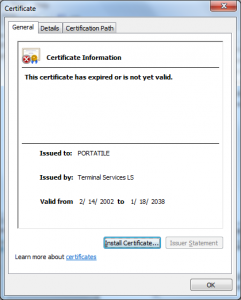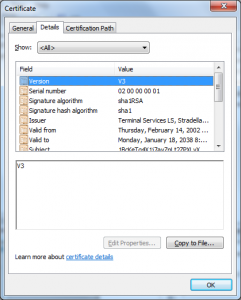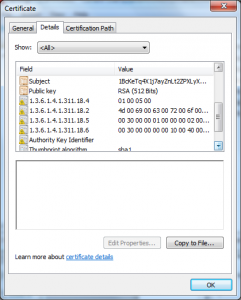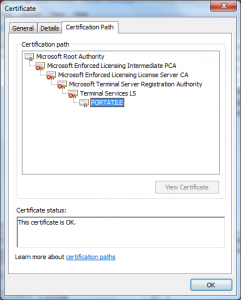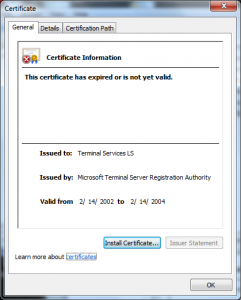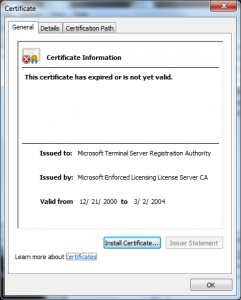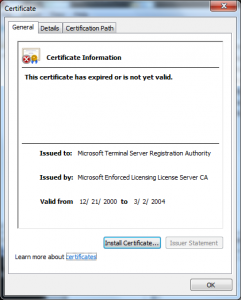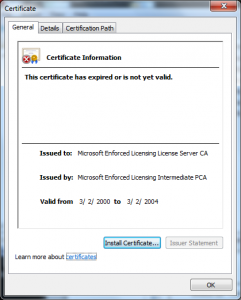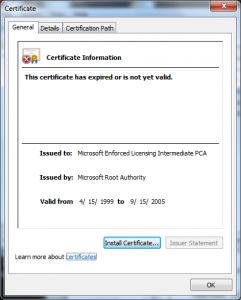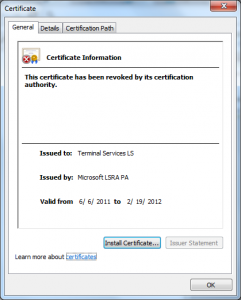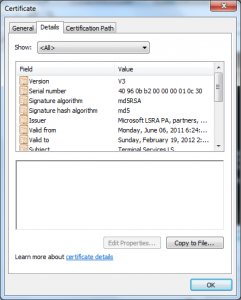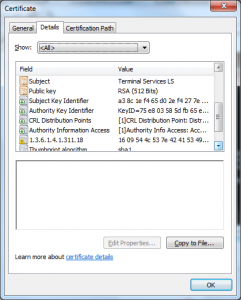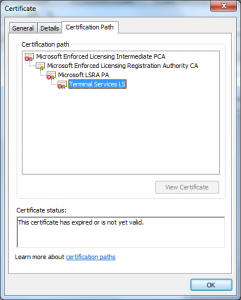The other day I did a post on the age of the Microsoft PKI that was used for Terminal Services Licensing, today I thought I would talk about what that age meant in the context of the vulnerabilities it introduced.
The oldest certificate I have been able to find from the same hierarchy is from April 1999 (that’s the issuance date for the Microsoft Enforced Licensing PCA).
Based on the post from the Microsoft Security Research & Defense blog we know that the reason the attacker had to do the MD5 collision was that as of Vista there was a change in the way critical extensions were handled.
This change made it so that Vista clients would fail when they saw a certificate that contained an unknown critical extension in a signing certificate making it an ineffective attack vector for those clients.
But what does this mean for the period of time before that? Well Windows Vista was released in November of 2006, that’s nearly 8 years in which any enterprise with a terminal services deployment could have owned a Windows PC “As Microsoft” or potentially attack a PKI based system with “trusted” but fraudulent certificate.
But did it really get better in with the release of VISTA? According to StatCounter Windows Vista received its maximum market share of 23% in October of 2009. Yes, two years after the release of Vista 77% of the Windows clients on the Internet were still vulnerable as a result of the design of the terminal services licensing solution.
Things didn’t really start to get better until XP SP3 which was released in April of 2008 as it contained the same certificate validation engine that was found in Vista.
While I do not have any public statistics I can share I can say that this service pack was picked up faster than any other service pack up until that point which says a lot since it was not a “forced” update.
If we are optimistic and say that it took only one year to get 100% penetration and we believe stat counters statistics for XPs Market share of 71% in April 2009 that it took till 2009 to get to 95% patched.
Now these numbers are just for clients on the Internet and not servers. This “fixed” chain validation engine wouldn’t have even found its way into the Windows Server code base until Windows Server 2008 which was released in February 2008 but took some time to get broadly used.
While Windows Servers are not terribly common on the Internet they are extremely common in the Enterprise, especially in 2009 where it had 73.9% market share. Again I don’t have numbers but antidotal we know that Enterprises are notoriously slow to upgrade or patch.
So where does this leave us in 2012? Still vulnerable that’s where.
The other day Microsoft released a patch that in-essence revokes the PKI in question and today WSUS announced their patch that introduces additional pinning.
You need to apply both to secure your systems.
Ryan
